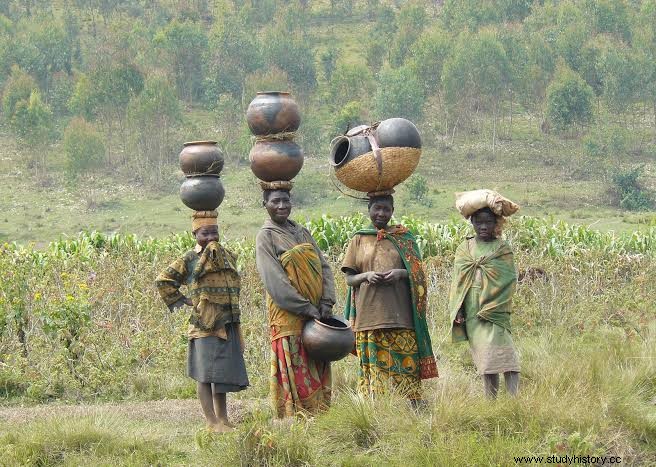The earliest inhabitants of Rwanda were an ethnic group called the Twa, but later the Bantu people took over and said that the Bantu people were divided into two groups:Hutus and Tutsi.
settlement
In the 1890s, Germany wanted to claim Rwanda as part of German East Africa. Two ethnic groups occupied Rwandan soil at that time - the Tutsis and the Hutus. The Tutsi minority owned the land and cattle, and the Hutu majority wanted to deal with them. The Germans believed that the Tutsis and Hutus were two different races, and that the Tutsis were the superior race. The appointed king (Mwami) was just a puppet for the colonizers.
Hutu and Tutsi

Belgium claimed Rwanda after World War I and incorporated it into Rwanda-Urundi. The Belgians intensified the rhetoric and believed, just like the Germans, that the Tutsis were superior. The Belgians compared the two. Everything from skulls, noses and height were measured and recorded. When all the physical differences between Hutus and Tutsi were determined, Rwandan citizens brought with them identity documents stating whether they were Hutus or Tutsi. The Belgians forced the Hutus to harvest coffee beans for them, and they instructed the Tutsis to supervise the Hutu workers, whose work was brutal and fatalities were common. Fortunately, the Tutsis were not subjected to the horrific treatment of the Hutus. The Belgian colonizers preferred the Tutsis in terms of education, housing and jobs.
Independence
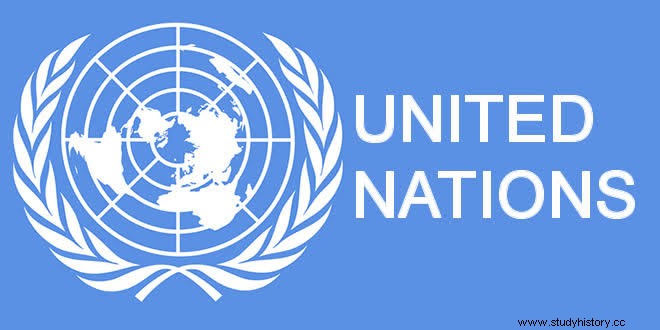
The United Nations took control of Rwanda after World War II and ordered the Belgians to prepare Rwanda for independence and majority rule. This was seen by the Belgians who suddenly showed favor with the Hutus (since they were the majority of the population). Liberation, equality and democracy that were strongly promoted led to more tension between the Hutus and the Tutsis. The Tutsis wanted a retaliation for the old ways and the Hutus feared such. Hutus and Tutsi formed two political parties - Paramehutu and UNAR. Paramehutu aimed at the Hutu regime and UNAR wanted the existing Tutsi rules to continue. The disaster was ready to implode itself throughout Rwanda and rumors circulating that Tutsi killed Hutus were the icing on the cake. This caused outrage from the Hutus, which resulted in many riots in 1959 which led to over 20,000 XNUMX Tutsis dying and many more fleeing to Burundi, Tanzania and Uganda. Mwami proposed a counterattack to fight the junk Hutu, but his plans ceased when the Belgian military intervened. The Belgians decided to mediate elections and a referendum for 1961. The Hutus won the election with a landslide and led with their victory Mwami and over three hundred thousand Tutsis into exile. Rwanda-Urundi then flowed into Rwanda and Burundi. The expelled Tutsis found refuge in Burundi and Uganda.
Violence after independence
(Flag of the Rwandan Armed Forces or Forces Armées Rwandaises (FAR), Image credit:Wikipedia The Tutsi refugees in Uganda fought a series of clashes with the new armed forces in Rwanda (FAR) - The Rwandan government used these as an excuse to discriminate against Tutsi under the guise of stopping / minimizing insurgent activity. Meanwhile, Burundi saw a reflection on the previous system in Rwanda where a minority Tutsi ruled over a majority population of Hutus. The Tutsis showed their anger in the form of a genocide in 1973 that resulted in the deaths of over two hundred thousand, mostly educated and political Hutus.
President Habyarimana and FPR

President Juvénal Habyarimana became president of Rwanda in 1973. Under him there were no separate political parties, Rwanda was a one-party state. The public disliked him and the declining economic situation in the country did not work in his favor.
Meanwhile, Tutsi in Uganda started the Rwandan Alliance for National Unity, to which Paul Kagame and Fred Rwigyema belonged. The organization seemed to make Rwanda a peaceful place for Tutsis. After the Ugandan bush war in the 1980s, Kagame and Rwigyema became high-ranking officials in the Rwandan Alliance for National Unity. They then reformed it into the Rwandan Patriotic Front (FPR), an armed force that aimed to invade Rwanda to repatriate the Tutsis to their homeland.

On October 1, 1990, the FPR invaded Rwanda. They took FAR on guard when they attacked by crossing the border, but this did not last long since Rwigyema soon died. Kagame stopped studying in the United States as a result of Rwigyema's death to join the war. French troops arrived in Rwanda to defend French-speaking Rwandans against the Ugandan invaders. In 1991, the FPR returned to Rwanda with a slower and more guerrilla offensive.
Akazu

With all this chaos going on in his country, President Habyarimana made concessions to the opposition, but they had no power. His wife, Agathe Habyarimana, was an opposition figure in power. She founded Akazu, a secret group of radical Hutus. They increased the amount of discrimination and violence against Tutsis by spreading propaganda against them. Because of this, more and more Tutsi supported the FPR.
'Efforts' made towards peace
In 1992, a civil war broke out and the president responded by announcing a one-party cabinet. The people of Kigali protested against this, so the president allowed a multi-party cabinet. He also decided to negotiate with the FPR. A ceasefire was signed in July 1992, and shortly thereafter, the president, Akazu, and Kagame met to begin "peace talks." Kagame seemed to appease international spectators so as not to look like a ruthless junk rebel. Akazu was against peace and the president just wanted to keep his job. Because of their extremism and radicalism, the president tried to purge Akazu's influence, but this only made them hate the president and the moderates as much as the Tutsis. Agathe started the radio station The Thousand Hills, which spread propaganda against Tutsi and for Hutu power. In February 1993, the Akazu family went on a Tutsi killing spree. This caused the FPR to stop the peace talks and they started an attack on Rwanda which started at the gates of Kigali. Over a million Hutus fled for their lives. The French strengthened their forces and Hutu fighters were prepared to die in battle, but Kagame did not resume the attack and continued peace talks.
Genocide overtook Rwanda over 20 years ago due to the long-running tension between Hutus and Tutsis. Paul Kagame took power over Rwanda shortly after the genocide and under him the country flourishes and is a tourist-friendly country.

Genocide
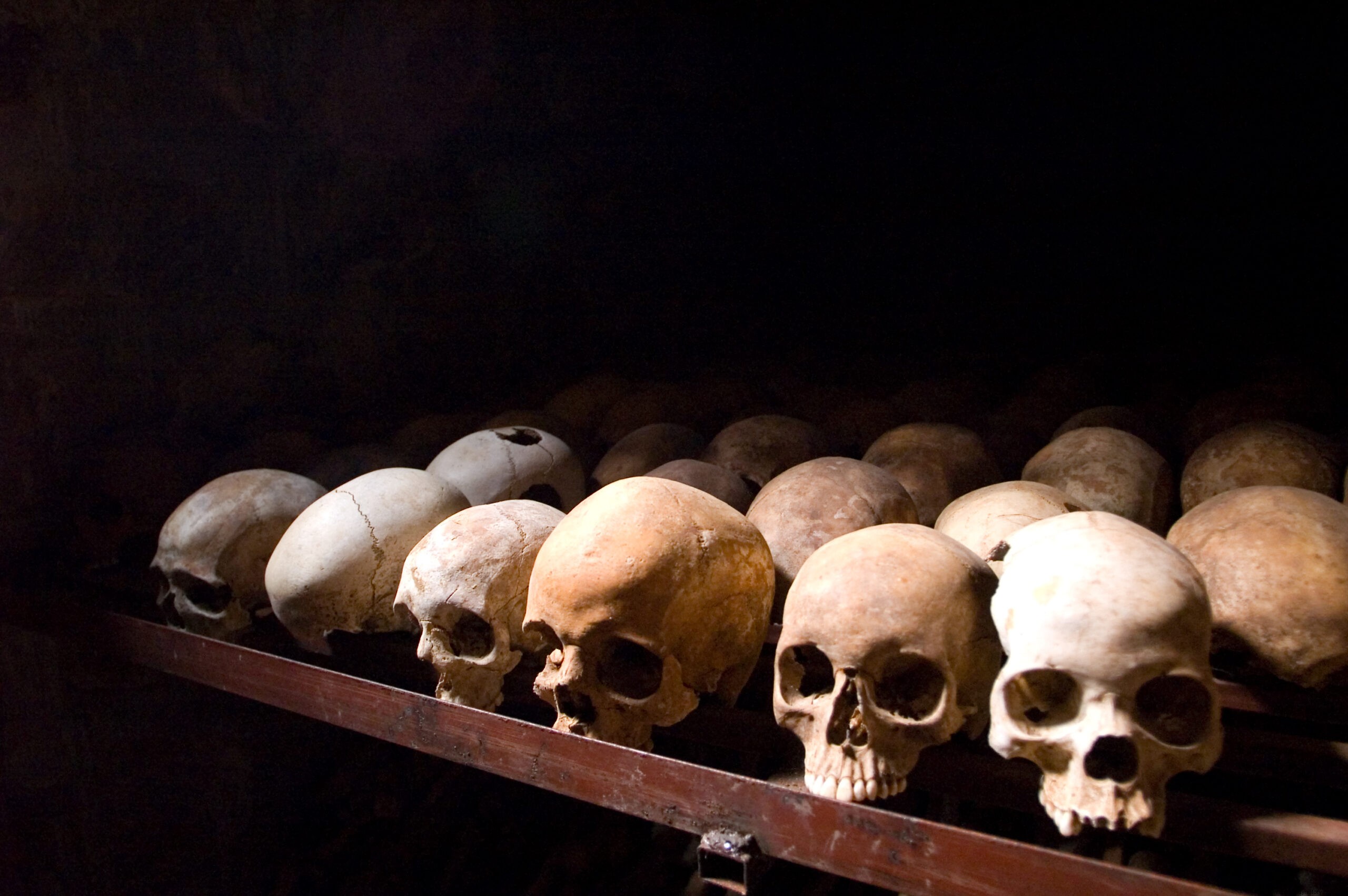
The FPR was less of an immediate threat, and with it, Akazu became a nuisance to the president, demanding that he get things going their way, and as a result, he made concessions to the Tutsi instead of them. This resulted in the Arusha agreement.
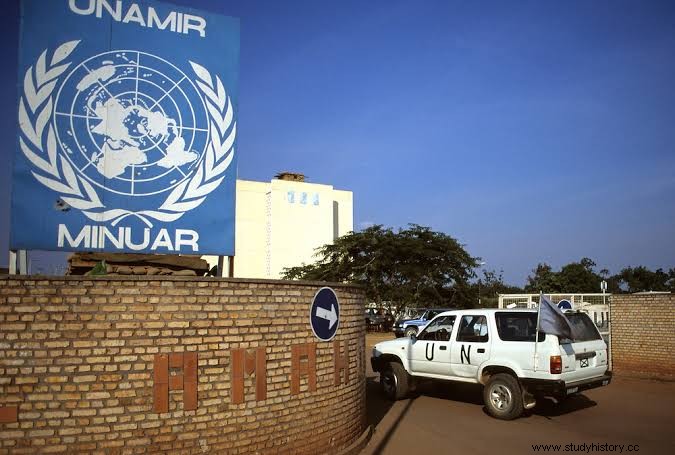
The UN deployed a new mission to Rwanda called UNAMIR with a predominantly Belgian force. The Hutus often organized rallies and Interahamwe (a Hutu terrorist clique) openly opposed Tutsis. Akazu handed out several weapons to militias (non-professional soldiers). UNAMIR members noticed warning signs of an impending catastrophic incident, but when they tried to warn the Security Council, they were greeted with "You must keep peace, do not make it." Shortly afterwards, the president's plane arrived outside Kigali airport. To this day, it is still unclear who the perpetrator was. The situation only got worse when the Thousand Hills radio station released the code word "cut the tall trees". Interahamwe and other Hutu militias raided the streets, killing all Tutsis and moderates. FATHER is mainly due to ingredients and sometimes the militias helped. Rogue FAR soldiers captured and killed 10 Belgian soldiers, and then the Belgian soldiers and many UNAMIR soldiers left. The genocide lasted for 100 days and rape / looting was quite common. The radio told the militias what to do, and FATHER helped. The Tutsis were violent oppressors and they had to be annihilated to achieve peace in Rwanda - according to Akazu.
Meanwhile, Kagame continued the civil war after the president's death, and FAR was not a threat as they were too focused on genocide. It was not difficult for FPR to put a bitter taste in the mouths of spectators with regard to their enemies. Every time UNAMIR demanded a ceasefire, the militias ignored them. On July 4, 1994, Kagame defeated FAR using both traditional and psycho-warfare tactics. The genocide ended shortly after Kagame's victory, 800,000 XNUMX people died from the genocide alone. Akazu, FAR, Interahamwe and millions of other Hutu refugees fled to Zaire (DR. Congo). Kagame became vice president, but he had real power and he was eventually given the title of president.
Modern Rwanda
Rwanda is the second fastest growing economy in the world andTop places to visit
1. Kigali

The first place you should visit when you are in Kigali is the Kigali Genocide Memorial, where you can [better] inform yourself about the genocide and learn about individual victims of it. The next place you should visit is Kigali Convention Center. This aesthetic and brightly lit dome-shaped building hosts many venues, such as the 5-star Radisson Blu Hotel with 292 rooms and 6 floors. You go to the center's auditorium where you can be so lucky to experience a concert. Another place to visit is the Inema Art Center - please your different senses with modern African art, crafts, music and dance. After a long day of exploring, treat yourself to some of the finest steaks and spirits in Kigali at The 1000 Hills Distillery.
2. Gorilla Guardian's Village

This village is located next to Volcanoes National Park. While visiting this village, take a guided tour through its various sites and experience the lives of the locals. Go to the copy of The King's House and be educated about the stories associated with this site. Afterwards, sit on the king's throne and let the village elder show you how to exercise your power as king through a village ceremony. You can then go to a traditional healer and listen to him / her teach you how traditional medicines such as medicinal grass, trees and shrubs cure patients. Afterwards, you can head to the banana brewery and treat yourself to a traditional banana beer. Do not leave this site without eating lunch or dinner with the locals and appreciating the skills of the traditional chefs / chefs.
3. Volcanoes National Park
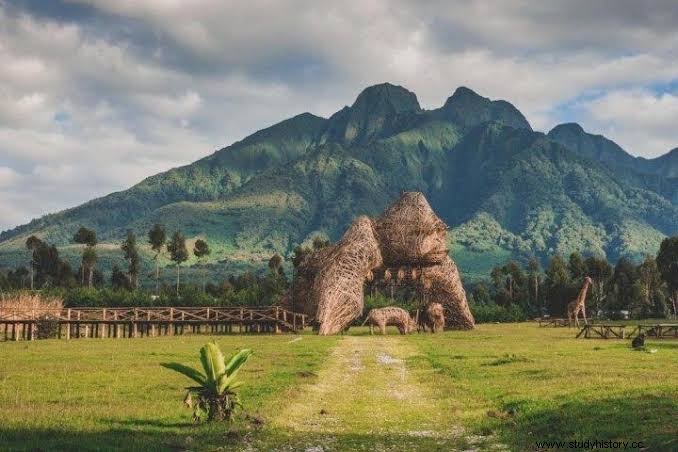
Vocalnoes National Park is located in the northwest of Rwanda. The mountains found here have steep slopes. Visitors will enjoy a rich mosaic of montane ecosystems, open grasslands and swamps. The national park got its name from the fact that five dormant volcanoes live in it - Karisimbi, Bisoke, Sabinyo, Gahinga and Muhabura. These mountains together form the Virunga massif. Walking through the rainforest in this national park may be the only chance you get to see a member / s of the endangered mountain gorillas. The rainforest is also home to 200 species of colorful birds and the rare golden monkey. Buhanga Eco-Park is located on the border of Volcanoes National Park. It contains some of the most interesting Rwandan folklore and Musanze caves, which were formed 62 million years ago after the last volcanic eruption. During the visit to the national park, you may want to go hiking (if it is your first trip, you may want to take the hiking trail that leads to Lake Ngezi, as it is the shortest trail).
4. Run away
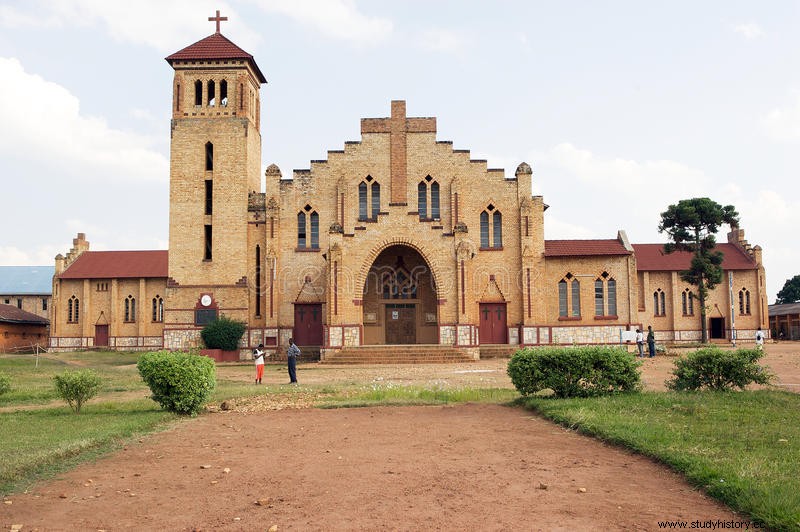
The fourth largest city in Rwanda and home to the oldest higher education institution in Rwanda - University of Rwanda. The Ruhande Arboretum, which is part of the university, has exotic trees nearby, and many bird species live on these trees. King Baudouin I of Belgium opened the National Ethnographic Museum in 4. The seven spacious halls contain a lot of information about the traditional culture of Rwanda and the history of the country and its people. Key exhibitions inform visitors about the hunter-gatherers of the past, the importance of cattle in Rwandan culture, traditional customs and beliefs and the royal Intoro dancers. Tourists can take a trip to Huye Cathedral and enjoy a choir rehearsal that will delight their ears. The cathedral was built in memory of Queen Astrid, the wife of Belgian King Leopold III, who died in a car accident in 1988. Visitors can enjoy Benedictine Gihandamayaga, located on the outskirts of Huye. This monastery hosts a jewelry workshop and a shop where visitors can buy various silver and gold items,
the conclusion
It is unbelievable how Rwanda has recovered from its previous genocide. Not only has it recovered, it thrives by showing good markers of economic growth and being a clean and generally interesting country to visit.

